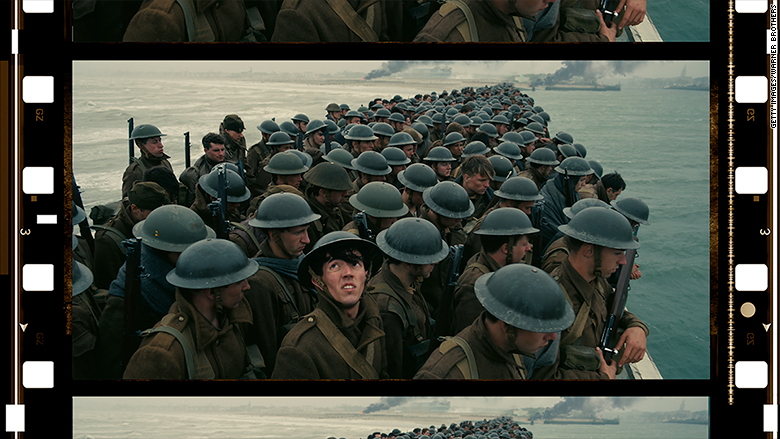
Christopher Nolan's critically acclaimed "Dunkirk" is the latest film to use an old piece of Hollywood technology: 70 millimeter film.
There's been considerable fanfare around Nolan's decision to film the Warner Bros.' World War II drama in 70mm, and for good reason. "Dunkirk," which opens this weekend, will be the widest release for the format in 25 years at a time where nearly all theaters have moved to digital projection instead of film.
So just what is 70mm film?
David Schwartz, chief curator of New York's Museum of the Moving Image, explained that before digital projection, films were typically shot on 35mm film. 70mm was another option that was twice as big. Since the size of the film was bigger, it changed the look and experience for moviegoers.
"You get a much bigger image, you get more detail, you get more light going through the film from the projector," Schwartz said. "You basically get a much brighter more vivid image."
The format came to prominence in feature films during the 1950's and 1960's when filmmakers used it to create epics like "Lawrence of Arabia" that felt bigger than the screen itself. Then with the rise of smaller multiplexes, changing tastes, and 70mm being expensive to both print and project, it fell out of vogue.
The medium has since staged a brief comeback thanks to big-time directors like Quentin Tarantino, who used it to film 2015's "The Hateful Eight." Now, "Dunkirk" looks to continue the tradition.
"It's a World War II movie, and it's a movie that really tries to put you right in the middle of this experience," Schwartz said. "It needs 70mm to really throw you into it."
But can the typical moviegoer tell the difference between a standard projection and a 70mm one? Well, at least not consciously.

Related: "'Dunkirk:' Christopher Nolan triumphs with World War II epic
"It's possible that the average viewer can't exactly put their finger on what's different about it, but when you see it... It just makes you feel like you're in the world of the film," Schwartz said. "They'll have a better experience even if they don't know why."
So with a 70mm feature, audiences aren't really going to get any more out of the plot line. Instead, they'll get a more immersive experience.
However, the choice may be a moot point for most since the 70mm showings of "Dunkirk" are pretty limited with only 159 locations worldwide.
But buzz around the special screenings may have served another purpose by giving it the feel of an event that needs to be seen in theaters rather than at home. That's important for an industry that needs to boost attendance.
Yet, despite the grand presentation, a bad movie is still a bad movie regardless of how it was shot.
This doesn't seem to be a problem for "Dunkirk" since the film currently has a 91% score on review site Rotten Tomatoes, showing that the format is only as good as the director and film behind it.
(Warner Bros., like CNN, is owned by Time Warner (TWX).)


